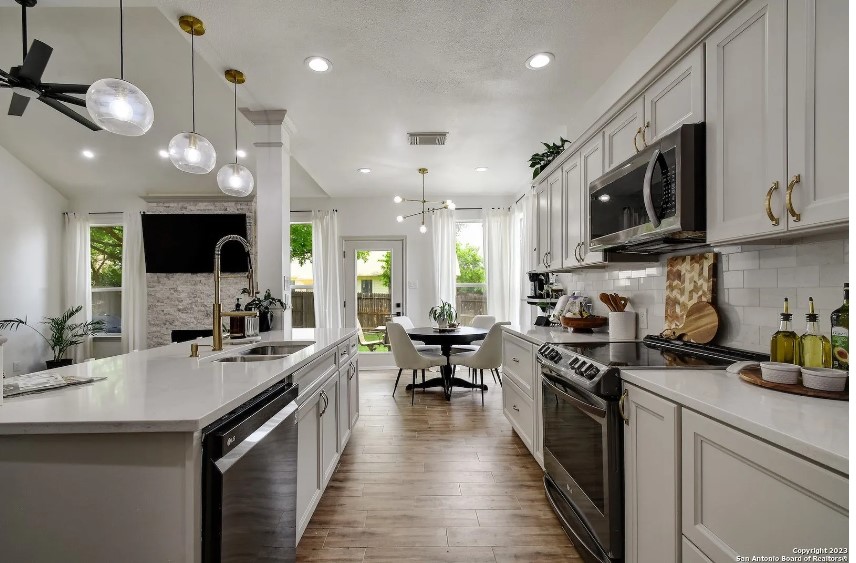How 3-2-1 Buydown Mortgages Work
A buydown is a mortgage-financing technique that allows a homebuyer to obtain a lower interest rate for at least the first few years of the loan.
Typically, the seller or homebuilder (sometimes even the mortgage lender) covers the cost of the 3-2-1 buydown. The cost equates to the savings to the buyer in the first three years.
In general, 3-2-1 buydown loans are available only for primary and secondary homes, not for investment properties. The 3-2-1 buydown is also not available as part of an adjustable-rate mortgage (ARM) with an initial period of fewer than five years.
The interest rate for a 3-2-1 buydown mortgage is reduced by 3% for the first year, 2% for the second year, and 1% for the third year. The original interest rate then kicks in for the remaining term of the loan.
By contrast, with a 2-1 buydown, the rate is reduced by 2% for the first year, 1% for the second year, and then rises to the original rate when the buydown period ends.
Pros and Cons of a 3-2-1 Buydown Mortgage
Pros
A 3-2-1 buydown mortgage can be an attractive option for homebuyers when mortgage rates are high enough to discourage a home purchase.
They give home sellers a way to entice buyers in challenging housing markets.
Buydown loans can be advantageous for borrowers who may not have the needed funds today but expect to have higher incomes in future years.
Over the first three years of lower monthly payments, borrowers can set aside cash for other expenses, such as home repairs or remodeling.
When the loan finally resets to its permanent interest rate, borrowers have the certainty of knowing what their payments will be for years to come, which can be useful for budgeting.
A fixed-rate 3-2-1 buydown mortgage is less risky than an ARM or a variable-rate mortgage, where rising interest rates could mean higher monthly payments in the future.
Cons
A potential downside of a 3-2-1 buydown mortgage is that it may lull the borrower into buying a more expensive home than they can afford.
The lower monthly costs are temporary and homebuyers must be prepared for a jump in payments.
Borrowers who assume that their income will rise enough to afford future payments could find themselves in financial trouble if this fails to occur.
Who Subsidizes 3-2-1 Buydown Mortgages?
The savings experienced by the homebuyer in the first three years of a buydown mortgage term represent the cost of a 3-2-1 buydown mortgage. Typically, the cost is covered by someone other than the buyer—the seller, homebuilder, or even the lender. For example, motivated sellers might be willing to pay the cost in order to attract buyers and close the deal.
In some circumstances, a company that’s moving an employee to a new city might cover the buydown cost to ease the expense of relocation. More commonly, real estate developers will offer buydowns as incentives to potential buyers of newly built homes.
Is a 3-2-1 Buydown Mortgage Right for You?
As mentioned, it can be risky to get a 3-2-1 buydown mortgage on the assumption that your income will rise sufficiently over the next three years so that you’ll be able to afford the mortgage payments when they reach their maximum level.
For that reason, you must consider how secure your job is and whether unforeseen circumstances could make your house payments unmanageable once you reach the fourth year.
In addition, if by some chance you have to pay for the buydown on your own, then the key question to ask yourself is whether paying the cash up front is worth the several years of lower payments that you’ll receive in return.
For example, you might have other uses for that money, such as investing it or using it to pay off other debts with higher interest rates (like credit cards or car loans). If you have the cash to spare and don’t need it for anything else, then a 3-2-1 buydown mortgage could make sense.
The question is easier to answer when another party foots the bill for the buydown. But even then, ask yourself whether the maximum monthly payments will be affordable. Could the enticingly low initial rates lead you to want a more expensive home and to take on a larger mortgage than makes sense financially? You’ll also want to make sure that the home is fairly priced in the first place and that the seller isn’t padding the price to cover the buydown costs.


 Facebook
Facebook
 Twitter
Twitter
 Pinterest
Pinterest
 Copy Link
Copy Link


